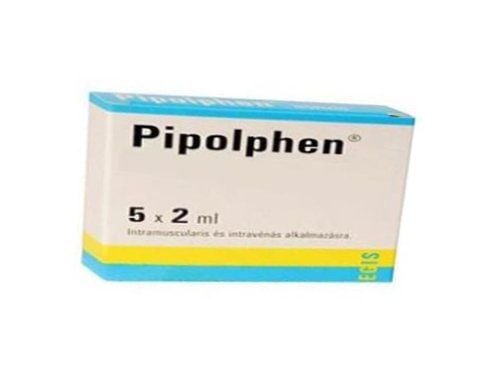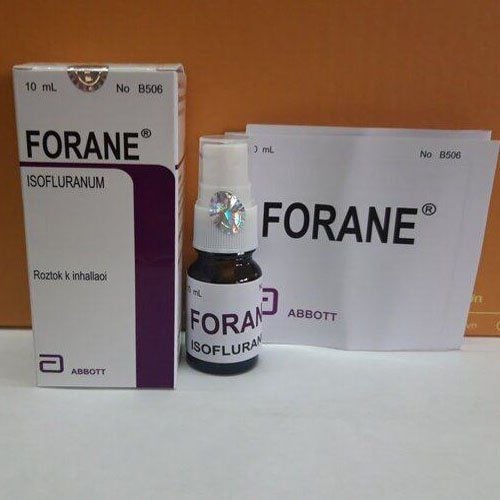This is an automatically translated article.
Xylocream medicine is made in the form of a skin cream, with the main ingredients being Lidocaine and Prilocain. The drug is used for local anesthesia in both adults and children.1. What is Xylocream?
What is Xylocream? 1g of Xylocream cream contains: 25mg of Lidocaine and 25mg of Prilocain and other excipients. Xylocream numbs the skin through the release mechanism of Lidocaine and Prilocaine. The above active ingredients will be diffused into the epidermis and skin epithelium, concentrated around pain receptors in the skin and nerve transmission fibers.
Lidocaine and Prilocaine are 2 local anesthetics with amide structure. Both substances have the ability to stabilize neuronal membranes through their ability to inhibit the ion exchange necessary for cell depolarization, thereby providing a local anesthetic effect. The depth of the anesthetic effect will depend on the duration of application and the dose administered. It takes about 1-2 hours for the patient to achieve a suitable anesthetic effect on intact skin.
Indications to use Xylocream
Adults: Xyclocream is indicated for local anesthesia:
On the skin in the following cases: Place an intravenous needle or take a blood sample; Surface surgery; Skin surgery on large areas of newly shaved skin, eg laser hair removal; Genital mucosa, eg before superficial surgery or before transmucosal anesthesia; Foot ulcers to facilitate cleaning or opening. Children: Xylocream is indicated for use in infants 0 - 2 months old, infants 3 - 11 months old and children 1 - 11 months old with a superficial anesthetic effect such as when inserting a needle or taking a sample. blood, surface surgery. In addition, Xylocream is also used for children with atopic dermatitis before scraping the inflammatory nodules.
Contraindications to the use of Xylocream:
Patients are sensitive to local anesthetics of the amide group or any of the excipients of the drug; Premature infants (born before 37 weeks gestation).
2. Usage and dosage of Xylocream
How to use: Apply to skin.
Dosage: Depending on the specific case according to the surface to be applied and the age of the patient. Specifically:
On the skin: Apply a thick layer of cream to the skin, cover with gauze:
Adults: Use a dose of about 1.5g/10cm2: Small procedures include needle placement, wound treatment on the surface. face: Apply about 2g in 1 - 5 hours; Skin surgery on large skin areas in hospital, eg grafting of separated skin: Apply about 1.5 - 2g/10cm2 for 2 - 5 hours; Skin surgery on newly shaved large skin loops such as laser hair cutting (by the patient himself): The maximum recommended dose is 60g. The maximum recommended dose in the treatment area is 600cm2 for at least 1 hour, up to 5 hours Children: Minor procedures such as needle insertion or superficial wound treatment: Apply approximately 1g/10cm2 over 1 hour : Infants 0-2 months old: Apply up to 1g and 10cm2 in 1 hour; Children 3 - 11 months old: Apply up to 2g and 20cm2 in 1 hour; Children 1 - 5 years old: Apply up to 10g and 100cm2 in 1 - 5 hours; Children 6 - 11 years old: Apply up to 20g and 200cm2 in 1 - 5 hours; Children with atopic dermatitis: The procedure is performed before scraping the soft nodules, the time to use the drug is 30 minutes; Genital mucosa:
Adults are treated for superficial wounds such as removal of genital warts (warts) and before local anesthetic injection: Apply about 5-10g every 5 - 10 minutes, no dressing needed. The procedure should be carried out immediately after wiping off Xyloream cream; Adults before colectomy: Apply 10g cream to the vaginal vault for 10 minutes. Male genital skin: Adults before local anesthetic injection: Apply a layer of cream about 1g/10cm2 thick and cover for 15 minutes.
Female genital skin: Adults before local anesthetic injection: Apply a layer of cream about 1-2g/10cm2 thick and cover for 60 minutes.
Foot ulcers: Adults who need to clean or open a foot ulcer: Apply a thick layer of cream about 1-2g/10cm2, up to 10g on the leg ulcer and then bandage it. Dosing time is 30 - 60 minutes. The ulcer should be cleaned immediately after wiping off the cream.
Attention should be paid to patients with impaired liver function: The dose of Xylocream should be adjusted by reducing the number of applications. For those who frequently apply or wipe off the cream, contact should be avoided to prevent hypersensitivity reactions.
Overdosage: In rare cases, the use of high doses of Prilocaine (the main ingredient of Xylocream) can cause an increase in plasma met-hemoglobin concentrations, especially when used in combination with drugs that induce met-hemoglobin such as: sulfonamides. The recommended use of local anesthetics alone usually does not reach toxic concentrations. However, if other local anesthetics are used to enhance the anesthetic effect, the effect can be enhanced and lead to overdose, causing systemic toxic reactions. Toxicity of local anesthetics is usually nervous system stimulation, rarely cardiovascular and central nervous system depression.
Treatment: People with severe neurological syndromes such as epilepsy, central nervous system depression should be treated symptomatically with respiratory support and antiepileptic drugs. resuscitation is recommended. Besides, because the process of absorption through the skin is slow, patients with signs of toxicity should be kept in the hospital for monitoring for a few hours after receiving emergency treatment.
3. Xylocream side effects
When using Xylocream, patients may experience some side effects such as:
Common: Transient reactions at the site of application such as paleness, erythema and skin edema; Uncommon: Initial mild burning, itching or burning sensation at the application site; application site paresthesia (eg, itching), skin irritation at the application site; Rare: Met-hemoglobin anemia, application site wound (purpura, especially after prolonged use in children with atopic dermatitis or molluscum contagiosum), eyeball irritation after eye contact, allergic reaction (most severe is anaphylaxis).
4. Be careful when using Xylocream
Before and during the use of Xylocream, patients should be aware:
People with G6PD enzyme deficiency, hereditary or idiopathic met-hemoglobin anemia will be more susceptible to the symptoms of met-hemoglobin-induced anemia. by the drug Xylocream; Xylocream should not be applied to broken skin or open wounds, except for foot wounds (including foot ulcers) because of the lack of clinical data on absorption; Due to the increased absorption of Xylocream in newly shaved skin, patients should strictly follow the recommended dose, skin area as well as the duration of drug use; Xylocream should be used with caution in patients with atopic dermatitis. Should apply the drug with a shorter time, about 15 - 30 minutes because if applied for longer than 30 minutes, there may be local vascular reactions, namely red swelling at the application site and spots, purpura. Before conducting scraping of soft nodules in children with atopic dermatitis, the drug should be applied for 30 minutes; Due to the lack of data on drug absorption, Xylocream should not be applied to the genital mucosa in children; Do not let Xylocream come into contact with your eyes, as it may cause eye irritation. In addition, loss of protective reflexes can also irritate the eyeball, potentially causing scratching. If the medicine gets into the eyes, the eyes should be immediately rinsed with clean water or sodium chloride solution, protecting the eyes until they return to normal; Xylocream should not be applied in cases where the eardrum is weakened. Animal studies have shown that Xylocream may cause ototoxicity when it enters the middle ear area; In infants less than 3 months of age, increased met-hemoglobin levels are usually observed within 12 hours of application of Xylocream; Patients being treated with class III antiarrhythmic drugs such as amiodarone should be closely monitored, ECG monitoring may cause side effects including symptoms on the heart; Studies have not demonstrated the effectiveness of Xylocream in the case of neonatal heel spurs; Lidocaine and Prilocain have the ability to kill bacteria and viruses at concentrations above 0.5 - 2%. Therefore, efficacy should be monitored after subcutaneous injection of live vaccines; Until more clinical data are available, Xylocream should not be used in the following cases: Children aged 0-12 months who are being treated with drugs that cause met-hemoglobin; premature infants (born before 37 weeks of age); Do not use Xylocream in people with recurrent porphyria; Patients with severe weakness, sepsis, acute illness, severe kidney failure or liver damage and children over 12 years old weighing less than 25kg should be given Xylocream based on weight and health status; Very high doses of lidocaine or short dosing intervals can increase plasma concentrations and lead to serious side effects. Patients should understand the importance of strictly following the recommended dosage. Treatment of serious side effects may require resuscitation equipment, oxygen, and resuscitation medications; When Lidocaine is used in combination with another local anesthetic, caution should be taken if the dose or method of administration may increase plasma concentrations in patients with bradycardia, epilepsy, impaired renal function, or impaired renal function. severe shock; Use caution when using Lidocaine in people with hypovolemia, Wolff - Parkinson - White syndrome, cardiovascular block and neurological disease; Xylocream contains hydrating polyoxyl 40 castor oil, which may cause skin reactions; Xylocream can be used in pregnant women. However, the patient still needs to use the drug carefully, according to the instructions of the doctor; Xylocream can be used during lactation.
5. Xylocream drug interactions
Some drug interactions of Xylocream include:
High doses of prilocaine may cause increased plasma concentrations of met-hemoglobin, especially when used in combination with drugs that cause met-hemoglobin such as sulfonamides; With high doses of Xylocream, caution should be exercised about systemic toxicity when the patient is using other local anesthetics because of the potential for increased toxicity; Use caution when co-administering Lidocaine/Prilocaine with class III antiarrhythmic drugs such as amiodarone; Drugs that decrease lidocaine clearance such as cimetidine or beta-blockers may increase lidocaine plasma concentrations to toxic levels with repeated and high doses of lidocaine. When taking Xylocream, patients should strictly follow the doctor's instructions to get the best therapeutic effect and limit the risk of possible side effects.
Follow Vinmec International General Hospital website to get more health, nutrition and beauty information to protect the health of yourself and your loved ones in your family.
Please dial HOTLINE for more information or register for an appointment HERE. Download MyVinmec app to make appointments faster and to manage your bookings easily.













